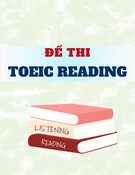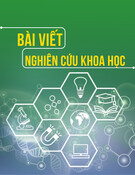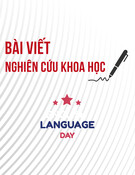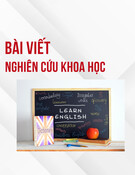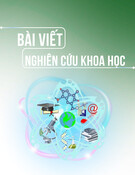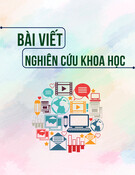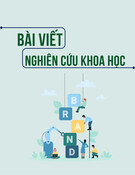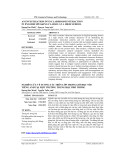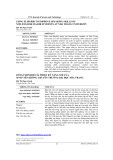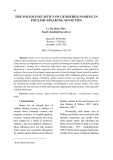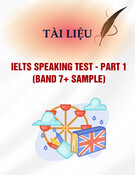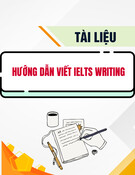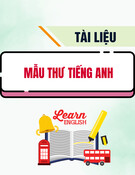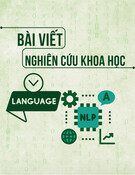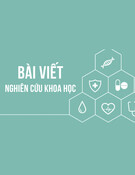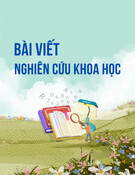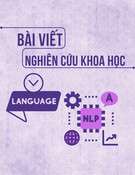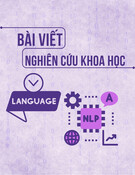
TNU Journal of Science and Technology
229(03): 12 - 19
http://jst.tnu.edu.vn 12 Email: jst@tnu.edu.vn
APPLYING DEBATE TECHNIQUES TO IMPROVE SPEAKING SKILLS
FOR 10TH GRADERS
Nguyen Thi Hong Chuyen1*, Pham Thi Nuong2
1TNU - University of Education
2Nguyen Trai High school, Vu Thu district, Thai Binh province
ARTICLE INFO
ABSTRACT
Received:
16/5/2023
The ability to communicate in English, an international language, is of
great concern due to globalization and integration. Therefore, teaching
English speaking has been increasingly important. In addition, debates
have been proven to be an effective method to improve students’ speaking
skills, which inspired the researcher to conduct formal research to see
whether debates could be used in the context of a high school in Thai Binh
province. The research aimed to investigate the effectiveness of applying
debate techniques to improve English speaking skills for 10th graders at a
high school in Thai Binh province. The quasi-experimental method was
applied to find out the current situation of teaching English speaking skills
and to what extent debate technique can improve English speaking skills
for 10th graders. The data collection instruments consist of questionnaires
and tests. Sixty students were divided into experimental and control
groups. The treatment (using debate techniques in speaking lessons) was
applied to students in the experimental group only. The higher results of
the experimental group helped the researcher identify the effectiveness of
using debate techniques to improve students' speaking skills.
Revised:
30/6/2023
Published:
30/6/2023
KEYWORDS
Debate
Debate technique
Speaking skills
10 graders
Effectiveness
ÁP DỤNG KỸ THUẬT TRANH BIỆN ĐỂ NÂNG CAO KỸ NĂNG NÓI
CHO HỌC SINH LỚP 10
Nguyễn Thị Hồng Chuyên1*, Phạm Thị Nương2
1Trường Đại học Sư phạm – ĐH Thái Nguyên
2Trường THPT Nguyễn Trãi, huyện Vũ Thư, tỉnh Thái Bình
THÔNG TIN BÀI BÁO
TÓM TẮT
Ngày nhận bài:
16/5/2023
Khả năng giao tiếp bằng ngôn ngữ quốc tế là tiếng Anh đang rất được quan
tâm trong bối cảnh toàn cầu hóa và hội nhập quốc tế. Vì vậy, việc dạy kỹ
năng nói tiếng Anh ngày càng trở nên quan trọng. Ngoài ra, tranh biện đã
được chứng minh là một phương pháp hiệu quả để cải thiện kỹ năng nói của
học sinh, điều này đã thôi thúc tác giả tiến hành nghiên cứu chính thức để
xem liệu tranh biện có thể được sử dụng trong bối cảnh của một trường trung
học phổ thông ở tỉnh Thái Bình hay không. Nghiên cứu nhằm mục đích khảo
sát hiệu quả của việc áp dụng kỹ thuật tranh biện để nâng cao kỹ năng nói
tiếng Anh cho học sinh lớp 10 tại một trường THPT ở tỉnh Thái Bình.
Nghiên cứu bán thực nghiệm được áp dụng để tìm hiểu thực trạng dạy kỹ
năng nói tiếng Anh và kỹ thuật tranh biện có thể nâng cao kỹ năng nói tiếng
Anh cho học sinh lớp 10 ở mức độ nào. Các công cụ thu thập dữ liệu bao
gồm bảng câu hỏi và bài kiểm tra. Sáu mươi sinh viên được chia thành các
nhóm thực nghiệm và đối chứng. Liệu pháp (sử dụng kỹ thuật tranh biện
trong giờ học nói) chỉ được áp dụng cho học sinh nhóm thực nghiệm. Kết
quả cao hơn của nhóm thực nghiệm đã giúp tác giả xác định được hiệu quả
của việc sử dụng kỹ thuật tranh biện để cải thiện kỹ năng nói của học sinh.
Ngày hoàn thiện:
30/6/2023
Ngày đăng:
30/6/2023
TỪ KHÓA
Tranh biện
Kỹ thuật tranh biện
Kỹ năng nói
Học sinh lớp 10
Tính hiệu quả
DOI: https://doi.org/10.34238/tnu-jst.7954
* Corresponding author. Email: chuyenknn@gmail.com





